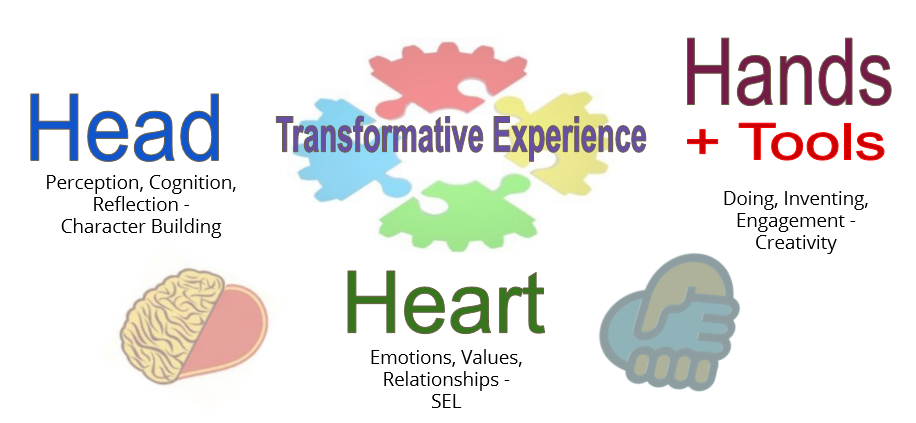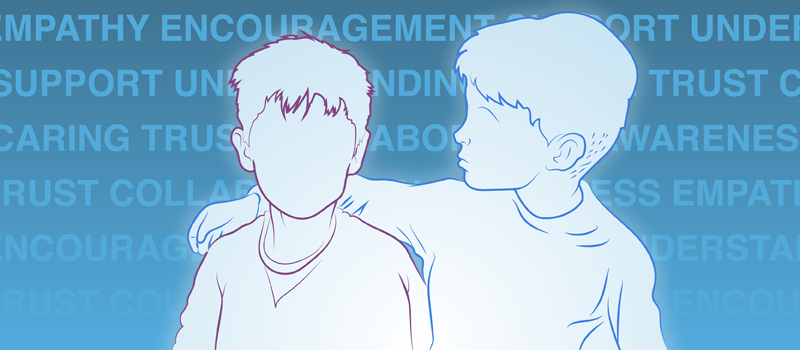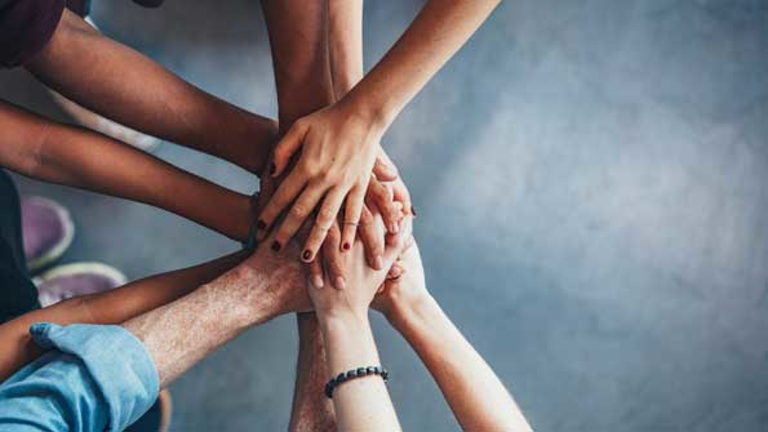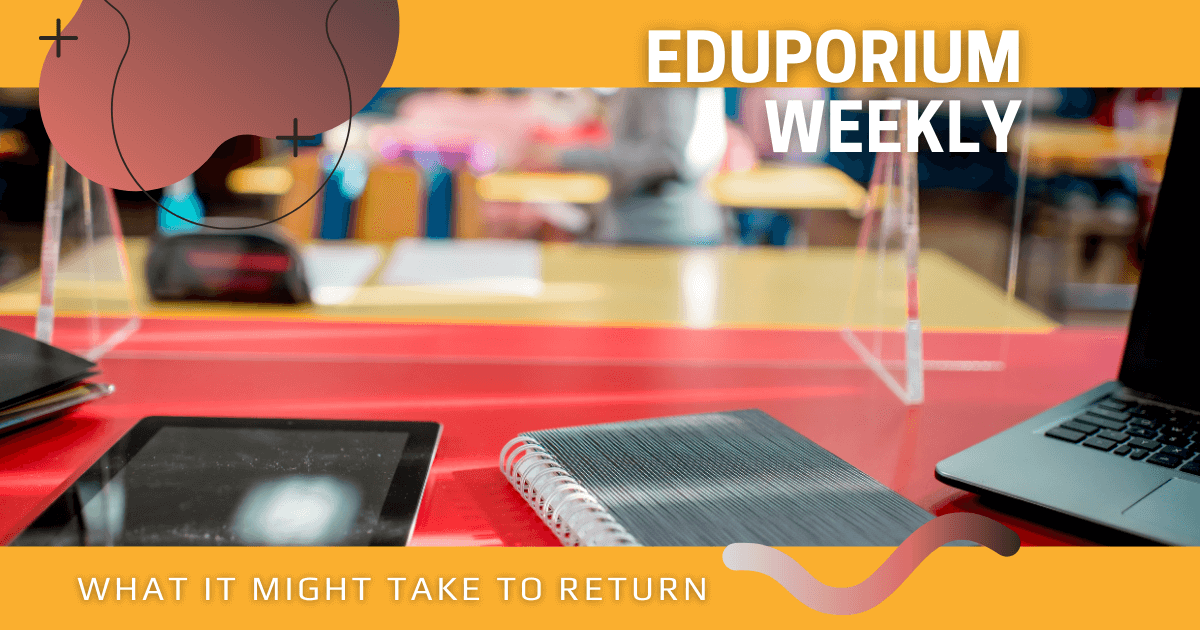District leaders, principals, and classroom teachers right now are trying to figure out how to best do what's seemingly impossible. With each passing day, the start of the school year is drawing closer and it's unclear what it'll look like. Many schools aren't opening on the first day of classes and, in other districts, indecision on their approach is common. Throw in the new political pressure and we have a pretty volatile, potentially dangerous, and likely fluid situation for the rest of the summer and likely those first few weeks of this year. Then, there’s the question of trauma. Students aren’t going to be returning to the same places and seeing the same faces that they know, making SEL something that school leaders will have to factor in as well.

SEL in Returning to School
It’s tough to know what to expect if and when teachers and students return to school. So, in various cases, educators are spending the summer preparing for different things. On top of all their logistical preparations, like lesson planning, decisions on in-person or hybrid content, ensuring physical distancing, and obtaining sanitizing products, they will also have to consider the social and emotional states of their children. Some of them may have been traumatized by the sudden upending of their lives or being isolated from family and friends over the last few months. In many ways, returning to the classroom might provide a form of healing, but it won’t be that simple. Students will have to learn this new way of receiving their education, interacting with their friends, and even eating their lunches before they truly reclaim their comfortability.
One of the best things school leaders and classroom teachers can do to help children return to normal is to create learning environments that allow everybody time and space to process what’s been happening, heal together, and start thriving again. Tying lessons to their traditional SEL approaches can help teachers and remembering all the important elements of SEL can, too. These include self-awareness, self-management, social awareness, relationship building, and decision making. Educators may also want to consider that the meanings and methods for highlighting each of these also may have been altered over the last few months. Not only have students had to deal with a worldwide pandemic (and possibly death), for example, many of them were probably angered or even personally affected by issues of racial injustice. Determining students’ states of mind will be key for educators in navigating an effective social and emotional return for them.
Educators could help students reflect on their own self-awareness by helping them better understand what they’re feeling about these events. They could also help kids recognize their strengths and understand their own biases or anything else that might be unclear. In terms of self-management, that will be key for helping kids develop resiliency, especially if they’ve suffered a loss. Knowing how to process these emotions in this time is still critical. As for social awareness, teachers could educate children on the health, social, personal, medical, economic, and other impacts of COVID-19. Presenting them with facts and then letting them draw conclusions might help them gain a broader understanding. Finally, to bolster relationships, teachers could focus on grieving and learning together. And, to incorporate decision making, they can encourage students to consider repercussions of actions. This helps them think things through rather than acting impulsively.
Creating the Right Kinds of Learning Environments
If and when schools all reopen, educators will need to stay careful—careful not to get too excited too soon. Just because the school reopens does not mean it will stay open long term. We know by now that anything can happen and teachers have to remember that. What we mean is they can’t get too excited and just start hugging children (that seems obvious) but they also can’t get too excited and just jump right back into how they’ve always taught. In many cases, they'll need to address traumas brought on by the events of the last few months. And, to do that, they need to help students recognize this safe space for sharing, discovering, and understanding their emotions. Kids had to keep learning without much structure, cope with emotional stress, and more. This means that teachers might have to address this in a safe space upon a return.
To help every student become socially and emotionally strong, the ideal environment for learning should be one that’s equitable. In order for teachers to get there, they could begin by fostering relationships with each of their students. This usually involves something as simple as a smile and a friendly greeting each morning or whatever else seems appropriate. Developing a routine with individual students or with their classes as a whole can make everything feel more comfortable—even if your learning is happening remotely to start this year. Teachers can also incorporate SEL activities and learning opportunities on a regular basis, helping to show kids how many of their lessons involve the chance for SEL development as well as learning content.
To put this into practice, educators can work to alter daily lesson plans and assignments to incorporate the SEL concepts. Meeting with students one-on-one each day (even virtually) can also help build connections that lead to students expressing themselves more. When it comes to remote learning in particular, there are still plenty of opportunities for educators to promote and practice social and emotional strategies with their children. One option is assigning work that kids can authentically connect with while solidifying a legitimate sense of belonging. Especially in your first few weeks of the new school year, establishing connections with students is going to be important. They’ll want to find a way to feel safe in school and trust that they will be taken care of if learning remotely. And, building the right kinds of environment can go a long way.

Restoring Relationships with an SEL Focus
For many students, especially our younger ones, everything they knew about school changed. They went from being with their teacher for six or seven hours a day to just seeing them through a screen for an hour or two (at most) each day. The minds of young kids are programmed to respond to routine and, when their schools shut down in the spring, the routine they knew was replaced with a different routine. Now, many of them became used to various remote routines and forgotten a bit about what in-person schooling was like. So, teachers need to be aware of this and, since most kids will be with new teachers to start the year, they should put extra focus on building relationships during those first couple weeks—whether they are person or online. To do so, teachers can start by evaluating how SEL efforts have fared previously.
If there were SEL efforts or programs in place in your school prior to the pandemic, that would be the ideal place to start. Reintroducing some of the experiences and concepts to students once this new year begins might help provide some familiarity and essentially jog their memories after the long absence from focusing on them. This can provide teachers with a foundation for teaching SEL this year and give kids a foundation to build on. If there are resources within the school community—perhaps from a counselor—now would be the perfect time to review them and craft a plan for implementation (we know educators are extremely busy and stressed out, so hopefully anybody who has created resources can also add ideas for implementation). Searching the school community or K-12 community can also yield useful SEL resources for teachers.
Any strategies teachers use should ideally roll out in an equitable way throughout a class of students. This means they should support the academic, social, and emotional development of your students as a whole. Any resources that school leaders create should also be available to all parents to help ease their students into this transition and back into going to school, especially if they have the fear of potentially getting sick. Beyond that, if students are going to be taking part in hybrid learning, that presents something else that’s entirely new. Focusing on SEL in this case could help them get comfortable more quickly and help them manage any stress. If educators work directly with students, ask for feedback, and prioritize their social-emotional well-being, the school year could get easier.
Communication Strategies As the School Year Nears
Some schools in the United States will start their 2020-21 academic years in as little as two weeks. Others have six or seven weeks left to fully prepare but there's an overwhelming feeling of uncertainty for many. In addition to tons of teachers, bus drivers, custodians, cafeteria workers, and all the other school employees literally having fear for their lives, parents are starting to become stressed out all over again at the prospect of another month, quarter, semester, or even a whole year of remote learning. As worried as many teachers are about what’s to come, parents will be sharing these emotions with them either way. So, communication from leaders will be key over these final weeks of the summer and into the school year.
To be blunt, parents are arguably as stressed as teachers regardless of which method of learning their kids will do. If remote learning remains in place, they’ll once again have to figure out how to balance their own job responsibilities with making sure their children attend classes, meet with teachers, and complete work. Plus, that gets extra complicated if there are two (or more) children in their house fighting over devices and bandwidth. On the other hand, if they’re sending children to school each day, they’ll undoubtedly be fearful of them getting sick. In school, they’d theoretically be six feet away from everyone, but you can’t guarantee that'll ensure safety. Thinking about their kids being in the room with 15 or 20 others who've been with their families who've been to work or to the store or to a restaurant won't give parents a whole lot of comfort.
The importance of transparency and updates from school leaders will be on display over the next couple of months. If school leaders honestly believe that every student and staff member will feel safe, that’s great. If they do not, that's just as important. They will need to communicate messages efficiently, consistently, and clearly to parents. Having someone who's trustworthy within their child’s school system can go a long way in helping to reduce parent's fears. And, if social-emotional learning is going to be a part of your reopening plans, let them know that, too! Chances are they’ll support the extra attention on SEL with all of the events since kids were last in school. As school leaders, communicating with parents also creates the opportunity to listen to them. Hearing all concerns and working together lets each group do what’s best for everyone.

The Importance of Developing an SEL Plan
If you are lucky enough to have your school reopen in-person this fall, that’s both good and bad news. It’s good for some obvious reasons, but could be bad if it leads to health issues, additional stress for teachers, some teachers refusing to come back, and casting another dramatic shift in the way students are receiving their precious education. For those reasons and some others, it’s important that school leaders have a plan for addressing social-emotional concerns early on. The world's a very different place now than it was when kids left the classroom in mid-March and the events of the coronavirus pandemic alone have likely caused trauma for students—especially any younger ones. If not handled successfully (or addressed at all), it can ultimately have adverse effects on these kids throughout their lives.
Simply seeing the coronavirus kill so many people in America can put fear in children, affecting their mental states. Traumas like that can affect how they'll learn as well, including their ability to focus, make decisions, and manage stress. If a young child has been affected by the pandemic firsthand with a death in the family, for example, they might even experience some trouble connecting with new peers and teachers or forming any new relationships. So, while academic needs may be dire at the start of school, social and emotional needs are probably equally vital. Whether opening in-person or remotely, students and parents likely need to address concerns, share thoughts, and express fears and feelings.
Other adverse effects of school closures, in addition to the devastation, might include children having been neglected, abused, or isolated. When they return to classrooms, the states of their mental health could be widely varied, so educators need to prepare. As important as student social-emotional health is, it also has its connection to academic achievement. So, it’s possible that students are unable to truly learn and return to normal unless their emotions are in check. In fact, students with stronger social-emotional regulation do better academically, socialize more, get into trouble less, and suffer less stress. If school officials can use SEL to achieve all (or some of these) factors, things should run more smoothly!
For the latest EdTech, STEM, SEL, and 21st century education news, follow us on Twitter and Instagram. Like us on Facebook, too, or sign up for our newsletter for announcements on our new EdTech offerings! Do you have an idea for the Eduporium Weekly theme? Send us a message on our social media accounts! Also, if your school leaders are planning to implement SEL initiatives to begin of the school year—whether in-person or remotely—or you think they could do more, we’d love to hear. Click below to get in touch!




